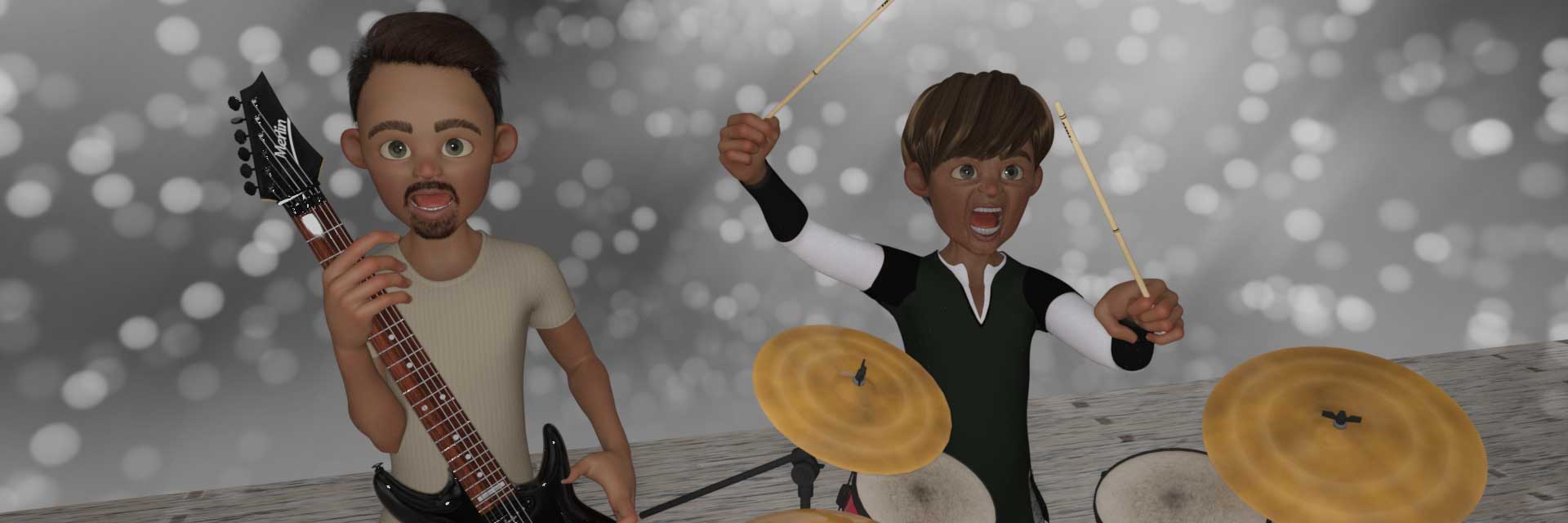How did Popular Music Affect World War 2?
The Second World War began with the Nazi invasion of Poland in September 1939, and ended with the final capitulation of Japan in August 1945. The intervening years were a period of unmitigated horror; the world experienced more death in that period than any other time before or since.
However, the war did have some positive effects on music. Many genres came into their own during this time, specifically jazz and blues. But there was also an unfortunate side effect: songs about soldiers, spies, and resistance fighters became all the rage. These songs were often so insipid that they could be played only once without causing permanent brain damage. Other songs, though, reveal the deep sadness of those who suffered during the war, or lost friends, neighbours, family or loved ones.
The Beginning: Tunes of Struggle
When the Second World War began, the fighting was happening in Europe and North Africa. The United States was not yet involved, so the songs being written at that time were about the struggles of resisting fascism and the people who were doing the resisting. Many of the most famous songs from this era are about the Battle of Britain, the fight against fascism in general, and the heroic efforts of the RAF and the RAAF. The Battle of Britain was fought between the RAF and the Luftwaffe. The British people were greatly outnumbered and outgunned, and they had no other choice than to engage the enemy with every aircraft they had. The British pilots were greatly outnumbered by the Luftwaffe, but they kept fighting anyway, and it was this resistance that inspired many songs.
Perhaps the most famous of the Second World War songs is "Lili Marleen," a beautiful German ballad about a soldier's love for a woman. The lyrics include the famous lines: "Lili Marleen, Lili Marleen/You are my sweetheart/My rifle is my best friend/Far away from home/I wish to end this war/And marry Lili Marleen." This was one of the very few songs of the Second World War that actually had some humanity in it. Most songs of the time were silly and pointless, but "Lili Marleen" was a beautiful song that really resonated with its audience, and it was a favourite of both sides in the war.
Martial Songs
The war songs of World War II were almost exclusively of the marching variety, and they fall into one of three categories. First, there were the songs of sheer defiance, which were intended to bolster morale, keep the spirit of resistance alive, and inspire soldiers to fight the good fight. Next, there were the parody songs. These were intended to lighten the load of soldiers who had to endure long periods of boredom and inaction.
Finally, there were the songs that tried to capture the horrors of war, and they fall into the category of what we now call “anti-war songs.” If we look at some examples, we’ll get a sense of the diversity of these songs. Some of the most famous defiance songs include “There’ll Always Be an England” and “We’ll Meet Again.” As the songs suggest, there was a sense that Britain would survive, and indeed it did. Songs include “Boogie Woogie Bugle Boy” and “It’s a Long Way to Tipperary.” “There’s a Long, Long Trail A-Winding” are great examples of anti-war songs.
Blues
Blues is a genre that emerged from the African-American communities of the Southern states of the US around the turn of the 20th century. The first blues songs were about the struggle of black people trying to get by in a society that did not want them, and this was reflected in the lyrics. Blues lyrics often talk about poverty, discrimination, and the harsh realities of life. The music is also very indicative of the times. It is often slow and mournful, with a minor key and minor chord progressions. Blues is a very versatile genre that has influenced many other forms of music, including jazz, rock, and even a little bit of country.
The blues were a musical genre that emerged in the early 20th century, but they reached their full potential during the Second World War. The harsh realities of war allowed the blues to flourish, and many of the most famous songs in blues history were composed during this time.
Jazz
Jazz is an American musical genre that originated in New Orleans in the early 1920s. (Some people consider New Orleans to be part of the Caribbean, but we’re counting it.) The earliest jazz songs are essentially what we now call “ragtime.” Ragtime was a very popular dance at the time, and when music publishers in New Orleans wanted to cash in on the trend, they started churning out ragtime tunes. It was not long before some of the musicians in New Orleans decided to go their own way. They began experimenting with ragtime, and the result was jazz. Early jazz songs were primarily instrumental and featured improvisation. The lyrics came later, and the subject matter tended to be very risqué.
The era of the Second World War saw the rise of modern jazz ensembles. The music that was being played before the war was very different from the style that was being performed in the early 1940s. And there are many jazz songs from this period that are well worth listening to. Most famously, "In a Sentimental Mood" is one of the best tunes to come out of the Second World War. It is a beautiful, sentimental tune about a man who misses his lover, and it was a favorite of many jazz fans. Other famous Second World War jazz songs include "Take Five," "Sing, Sing, Sing," and "Sunrise Serenade."
Swing Music
Swing music is a subgenre of jazz that was popular in the 1930s. The name comes from the fact that the musicians would “swing” their way through the music. As with many forms of music from that period, swing music is also called “big band” music. The lyrics of swing songs often refer to dancing and love. The love songs tend to be very saccharine, but the lyrics about dancing are raunchy. The public was not aware of this at the time; for some reason, censors let the raunchiness of swing lyrics fly under the radar.
The swing era was a very important time in music history, and many of the most famous swing numbers were created during the Second World War. Many swing musicians were drafted, so they composed songs in the style they were most familiar with while they were away fighting. Some of the best swing tunes of the era included "In the Mood," "One O'clock Jump," "Muskrat Ramble," and "Jive at Five," all of which are still popular today. Many of the famous swing musicians returned from their military service with a renewed interest in jazz, which had gone through many changes in their absence.
Big Band Music
Big band music is a type of swing music. The difference is that big band music features large ensembles, often with an extra section of saxophones and trumpets, while swing music is performed by a small group of musicians. Big band music is performed by 10-person ensembles and larger, and the arrangements are often fairly simple.
Big band music is a very extroverted type of music that is meant to be performed in front of a live audience. It is also designed to be easy to dance to, and many of the songs are in compound meters.
Big band music has a long history, but the most famous pieces of this genre were created during the Second World War. One of the most famous pieces of Second World War big band music is "Boogie Woogie Bugle Boy," which was a silly novelty song about a soldier who likes to dance.
Light Music and Comedy
Up until this point, the songs discussed have all been serious in nature. This was not always the case, however. During the Second World War, a genre of music emerged that is now referred to as “light music.” This type of music was generally not intended to be taken seriously. Rather, it was meant to provide entertainment in times of boredom. The most well-known examples of light music are “The Land of the Free” and “I’ll Be Seeing You.” Both songs are beautiful and light, and they bring a sense of hope and optimism to the listener. There is also “Don’t Sit Under the Apple Tree,” which is a song about infatuation. The lyrics are a series of metaphors, including references to “the land of the free” and “the loveliest of all trees.”
Music as a Weapon
Some music is inherently political. It is hard to separate the two because some genres, like rock and roll, are so loud and in-your-face that they force their political views on the listener whether he wants them or not. There are also songs that are not overtly political in nature but that become so due to the circumstances of their creation. This is particularly true of the period between 1941 and 1942, when America was still neutral but Britain was threatened by imminent invasion by the Axis powers. Some of the most famous songs from this time period are “Keep ‘em Flying” and “Praise the Lord and Pass the Ammunition.” While the lyrics of these songs are general enough to be applicable to any war, they became associated with the Second World War because that is when they were performed most often.
Sad Songs for Dark Times
As we near the end of the Second World War, we see a trend towards more sad songs. It is as if the musicians could sense that the war was coming to an end, and they did not want to celebrate victory too soon. Many of the sad songs were about loved ones who had been killed in the war and how much it hurt to lose them.
Some of the most famous songs from the end of the war are “I’ll Be Seeing You” and “I’ll Walk Alone.” Both songs deal with the finality of death and how painful it is to lose a loved one. There are also songs like “I’ll Get By” and “I’ll Be Home for Christmas” that deal with sadness and longing.

